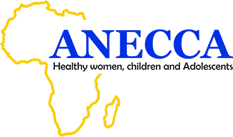The global community has set the goal of ending the AIDS epidemic by 2030. Recent data from UNAIDS postulate that only half of treatment-eligible children living with HIV in sub-Saharan Africa are likely to receive antiretroviral therapy compared with HIV-positive adults. As compared to adults, adolescents are experiencing poorer outcomes , higher rates of mortality, loss to follow up and lower rates of virological suppression. . Adolescents are the only age group in which AIDS-related deaths increased., The annual number of AIDS-related deaths among adolescents almost doubled between 2005 and 2012. Non-existent and inconsistent policies are some of the reasons that have prevented national and subnational governments in sub-Saharan Africa from explicitly programming for children and adolescents living with HIV.
ANECCA received a grant from the Global Fund for AIDS, Tuberculosis and Malaria (Global Fund) to implement the “Catalysing access to quality services for children and adolescents living with HIV” regional project to address issues that impede optimal coverage and quality of care. The project aims to remove policy bottlenecks, build capacity, and ensure access to appropriate information and services related to HIV testing, care and treatment for children and adolescents in seven countries.
ANECCA commissioned a team of national and international consultants, to conduct rapid assessments of policy gaps which provides strategic direction on how to deliver quality care, treatment and support services, and mentor ship approaches for children and adolescent HIV services. The result of these rapid needs assessments was a well informed the development, reviewed national guidelines as well as policies,strategic plans order to improve comprehensive paediatric and adolescent HIV services in the seven countries.
Download Full Report >>> Regional Policy Review on Paediatric and Adolescent HIV Care
